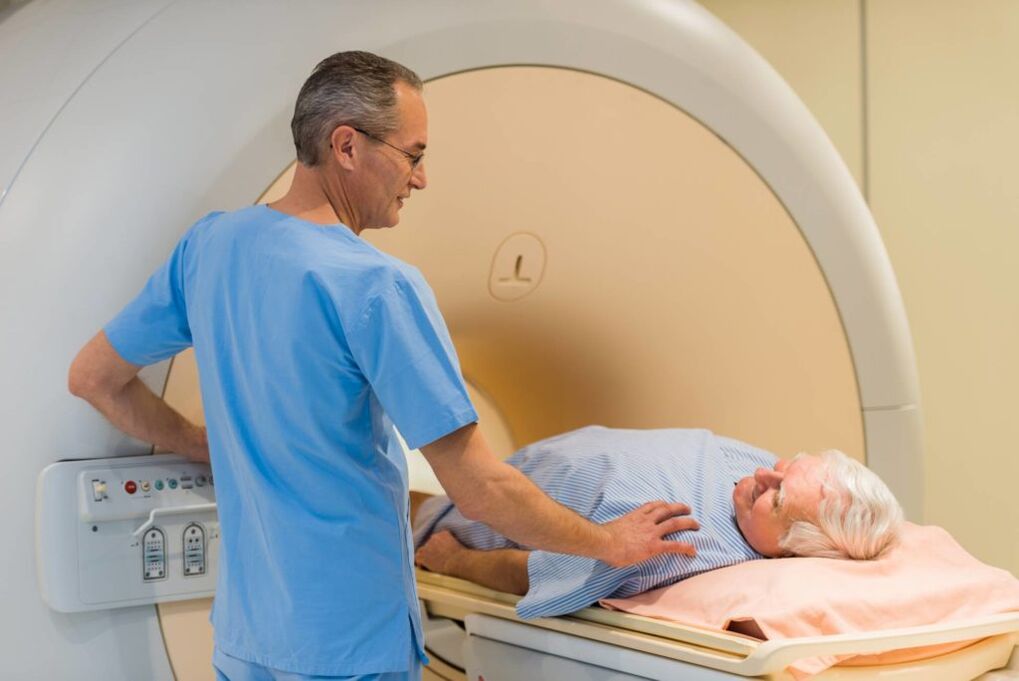Chronic prostatitis is a complication of a chronic inflammatory process in the prostate gland. With this disease, deposits are formed in the excretory ducts of the prostate and acini. As a result of the development of the pathological process, the patient wants to urinate more often, pain develops in the perineum and lower abdomen, and the ability to get an erection is impaired. You should not follow the progress of this disease, as it can eventually lead to a number of health problems.
What is prostatic disease

This disease is a form of chronic prostatitis. This disease, which is characterized by the formation of prostate glands or stones, is one of the most frequent consequences of a prolonged inflammatory process observed in the prostate gland.
Prostate stones are usually detected during routine examination in about 9% of men of various ages.
There are three peak age groups in terms of incidence of this form of prostatitis:
- 30-39 years old. As a rule, the disease is not detected in patients under 30 years of age. However, the disease is getting younger and younger. In people of this age, the development of prostatitis is associated with a prolonged episode of chronic prostatitis caused by gonorrhea, chlamydia, ureaplasmosis or mycoplasmosis.
- 40-59 years old. In men of this age, the disease often causes a prostate tumor.
- Over age 60. In this case, prostatitis often develops against the background of a decline in sexual function.
Causes and risk factors
Stone formation in the prostate gland can be due to two types of reasons:
- True or primary, is characterized by direct development of the disease in the ducts of the gland or acini.
- Secondary or pseudomembranous, in which there is migration of stones from the upper urinary tract. Usually, the place of their formation is the bladder, kidney or urethra. The reason for the development of prostatitis can be urolithiasis.
Depending on the nature of the onset of the disease, the reasons for its development are divided into two groups:
- Exogenous. In this case, we are talking about factors that are not related to the functioning of the body, but act on it from the outside. This includes drug addiction, smoking or alcohol abuse.
- Endogenous. Conclusions occur against the background of any disturbances in the functioning of the body. We're talking about organ trauma or complications after surgery. Bacterial damage to the prostate gland is also implicated in these factors.

Alcohol abuse can trigger the development of prostatitis in men.
Computational prostatitis often develops against the background of stagnant, inflammatory changes in the prostate gland. Such processes arise due to insufficiently functioning prostate glands, therefore the following factors are the main causes of the disease:
- lack of regular sex life;
- the predominance of a sedentary lifestyle;
- replace sex with masturbation;
- bad habits, such as alcoholism or smoking;
- inflammatory processes of the prostate gland due to the penetration of microorganisms into this organ.
Experts distinguish between two main pathological mechanisms that lead to the formation of stones in the organ and its ducts:
- Violation of the secretory function, as a result of which a significant stagnation of the secretion of the prostate gland is formed.
- Throw urine into the cavity of the prostate gland. This can happen due to improper functioning of the genitourinary system, the formation of fistulas and the influence of a number of other negative factors.
Symptom
The signs of prostatitis share many of the same features as the development of chronic prostatitis, but they are more pronounced. Most patients with this diagnosed prostatitis complain of difficulty and pain with urination.
The difference from chronic prostatitis in this case is that the pain occurs in the patient around the clock and not only at night. The reason for such a clinical picture is usually a disordered course of urine flow and prostate secretions. This is due to a complete or partial blockage of the duct with the stone.
Some other symptoms of the disease should also be highlighted:
- The presence of pain in the pelvis and perineum. Moreover, they can manifest themselves not only when urinating. Patients experience discomfort in the coccyx and lower abdomen, independent of the specific time of day.
- Pathological impurities appear in semen. Usually, discharge with blood is found in it, and only in severe cases pus is present.
- Feeling sad to urinate on the background of frequent false desires. In most patients, very little urine is excreted. However, it may not be at all.
- Erectile dysfunction. Because the ducts of the prostate gland are blocked, the normal discharge of semen from this organ is disturbed. All this leads to the inability to complete intercourse.
In the most advanced cases of the disease, the patient may completely lack the ability to have an erection and significantly reduce the desire to have sex.
Diagnose

Magnetic resonance imaging gives good results to accurately identify the disease.
Before being treated for prostatitis with tartar, the patient must be carefully examined. The urologist is involved in the diagnosis of this disease. He is obliged to make a preliminary diagnosis based on the complaints of the patient, as well as a subsequent physical and instrumental examination. It includes the following procedures:
- Digital rectal examination of the prostate gland. It is done by palpation. With prostatitis, the patient has a nodular type and a rough surface of calcifications.
- Transrectal ultrasound of the prostate gland. Through this process, the stones were determined to have the appearance of super-reflective formations with a clearly visible acoustic line. The number of such formations, their size, localization and structure are studied.
- Urine examination. This procedure allows you to determine the presence of orchitis.
- MRI and CT of the prostate gland. These techniques were highly effective and were used to confirm the results of previous studies.
When additional procedures are used: urethrography, vasectomy, and computed tomography.
In addition to instrumental techniques, the diagnosis of prostatitis includes laboratory tests, including the following procedures:
- Study the secretion of the prostate gland.
- Analysis for bacteriological culture of urine and urethral material.
- PCR studies, in which curettage is performed, studies the presence of genital infections.
- Blood tests. Usually, a biochemical analysis is given.
- Urine analysis.
- Semen analysis for biochemistry.
- Bacteriological seeding of ejaculation.
If we are talking about conducting differential diagnosis, then its task is to distinguish prostatitis from tuberculosis, prostate neoplasm, prostate cancer, as well as other types of prostatitisdifferent.
The treatment
How to cure prostatitis? The treatment for prostatitis is prescribed by a doctor based on a thorough diagnosis. Depending on how advanced the disease is, several treatment options may be available. Let's look at each in more detail.
Drug treatment
The course of treatment is strictly prescribed by the doctor individually.
Treatment of chronic prostatitis with tablets can last from one to three months. This type of therapy is primarily aimed at achieving stable remission and preventing complications of the disease.
Regardless of the cause of the disease, the patient is prescribed antibacterial drugs. Antibiotics are prescribed based on the results of the analysis of urinary excretion and urine culture.
The most common remedies used in the treatment of prostatitis are:
- Fluoroquinolones. This is the most effective class of antibiotics used in the treatment of prostatitis. However, these funds can only be used after the presence of tuberculosis has been completely ruled out.
- Tetracyclines. They are used less often, because they often cause side effects.
- Penicillin. Classical antibiotics have a wide range of effects on pathogenic microflora.
- Cephalosporins.
Physical therapy
To enhance the effect of drug therapy and improve the function of the prostate gland, the following physiotherapeutic techniques are used:
- Magnetic therapy. It is used to eliminate edema and normalize blood circulation.
- Laser therapy. Eliminates pain syndrome and helps to reduce the inflammatory process.
- Prostate massage. Allows you to restore the luminosity of the ducts, improve blood circulation in the prostate gland.
In some cases, the treatment of prostatitis requires a radical approach. In this case, different surgical techniques are used, the most common of which is prostatectomy.
Possible complications

Exercise is the best way to prevent prostatitis.
Without prompt treatment, the patient may develop chronic prostatitis. This can lead to the following dangerous complications:
- the development of an abscess;
- prostate fibrosis;
- problems with potency;
- urinary incontinence;
- inflammatory vesicles.
Therefore, timely identification of prostatitis and initiation of treatment is very important. For the prevention of this disease, one should give up alcohol and tobacco, play sports, treat infections in time and prevent hypothermia of the body.
























